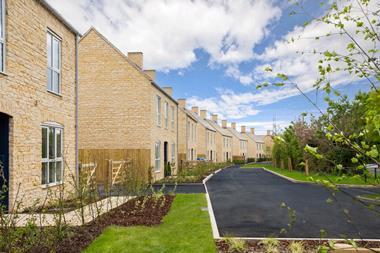You may have noticed that there are to be shifts ahead in the provision of affordable housing.

The July Budget together with the Welfare Reform and Work Bill have paved the way in anticipation of the Autumn Statement and Housing Bill later this year.
Clear emphasis has been placed on increasing home ownership levels, which we all know have been in decline for many years. The most immediate impact for housing associations has been the requirement for us to reduce our rents by 1% a year over the next four years; this reversed a rent settlement based on rent increases of CPI plus 1% on which we had been basing our plans for development growth.
Other notable headlines have been the introduction of the Right to Buy, the sale of council homes to compensate housing associations for this and a bigger emphasis on submarket sale, i.e. shared ownership, rather than submarket rent as affordable housing contributions.
The financial impact of all this on housing associations varies greatly. For those like Thames Valley Housing that have a diverse business model, it will undoubtedly impact our income streams and partnerships, but with some adjustments we can continue.
For others the news is catastrophic. The sector is having a moment to readjust and talks are taking place daily on ways to increase income, sell stock, slow down development programmes and propose mergers for greater efficiency while keeping our social purpose front of mind at all times. But with all this talk about business plans let’s not forget about the tenants.
A new ‘pay-to-stay’ model is being proposed whereby those on incomes of over £30,000 outside London and £40,000 inside London will need to move from a subsidised rent to a market rent. This, on top of benefit reductions and tighter welfare caps, will mean that those on low incomes will find it very hard to live in areas such as London and the South East. They will need to make some tough decisions on what to do.
This is already being evidenced - a recent headline showed the number of free school meals in inner London has dropped by a third since 2010, portraying a mass shift of poorer families from the centre to outer London and beyond. These will continue and extend further.
So what does this mean for our diverse capital and developers? While many would argue the current system of section 106 is far from perfect with endless discussions on viability and affordable housing contributions, just imagine the impact of no affordable housing on an area.
As well as thinking about how starter homes and shared ownership impact on the build-out, cash flow and sale of the scheme, what will they do for the diversity of an area? How will this shifting population impact on people’s lives and the stability of an area? Areas such as Hackney and Peckham are thriving because of the mixed vibe that they have, but many places in inner London are now becoming soulless and dull.
Developers with a desire to create truly great places must speak out now and bring their skills into partnership with housing associations. A blend of mission and profit can create the most vibrant of communities. Associations must bring in commercial profits and developers must have credibility in communities to be successful.
Mixed tenure creates attractive and vibrant space and in turn greater opportunity to think beyond the homes built to the services in the community. This might include spaces for start-up businesses that employ local people, toddler groups, IT classes, exercise classes in open spaces when the weather permits (not just restricted private gyms) or even swimming pools.
The build-to-let sector and even the hotel industry are beginning to think about how communities can interact with buildings, as a visit to a Fizzy scheme or to the Hoxton hotel will show. We can continue to work in silos, but a more holistic approach will result in the most vibrant places and change people’s lives for the better. So let’s work together to achieve this.
Geeta Nanda is group chief executive at Thames Valley Housing association






























No comments yet